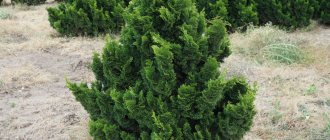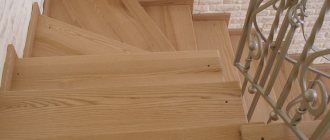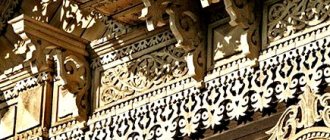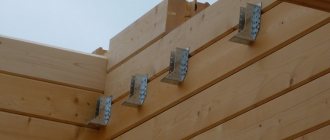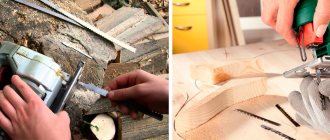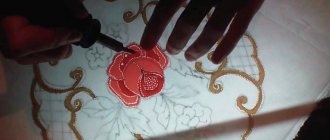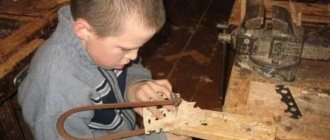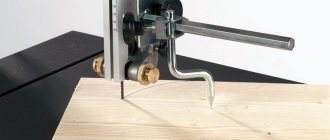Purpose
The large number of operations performed indicates versatility:
- sampling of recesses;
- chamfering;
- cleaning of grooves;
- thread;
- planing.
The purpose of the tool is indicated by the sharpening angle. With a large value, the cutting edge is stronger. For this reason, under conditions of rough work, the chisel is sharpened at an angle of 27-40 degrees. Chiselling is done with a chisel. This tool is gradually being replaced by electric machines. Its features: a narrow, thick blade, tapering towards the end. The power of the working part allows it to be used as a lever to remove chips from deep holes.
For work on a workbench, the cutting edge of chisels is sharpened more intensely. Its angle is 20-31 degrees. Considered optimal for maintaining strength while maintaining maximum sharpness.
For delicate work and removing small volumes of chips, scoring models with a razor-like blade are used. They have the greatest sharpness, allowing for delicate carvings. Hammer strikes are contraindicated. Only hand cleaning is possible. The length of the blade is 200-270 mm, the angle is sharpened to 15-22 degrees. They dull much faster than other types, especially when processing hard wood (oak, walnut, larch, maple).
Universal chisel
Just a few years ago, work with wood was carried out using hand tools, but today there are devices, for example, an electric chisel, that make it possible to significantly facilitate the work of the master, as well as increase the speed of work while maintaining high quality.
An electric chisel is called universal because it allows you to carry out a wide range of work. High-power chisel models can cope with the removal of old parquet boards or rough processing of a large piece of wood, removing knots and other hard inclusions. It is impossible to cope with such work using only hand tools.
This tool is considered universal because it has many attachments of different shapes and sizes. For example, small semicircular and straight 4 mm bits will help you make patterned carvings or engrave the master’s initials, while more massive tools, up to 5 cm wide, are designed for removing wide chips and roughing.
Design
Consists of a steel blade with a sharp blade. The wedge-shaped shank, located on the reverse side, is inserted into the wooden handle. The connection point is reinforced with a metal cap. It accepts wood fibers, maintaining the integrity of the instrument under physical pressure.
The handle is made of impact-resistant plastic or viscous wood:
- maple;
- oak;
- hornbeam;
- ash.
Plastic handles are made of two or three components. In addition to the base, there are rubber inserts for comfortable holding, and an iron or leather butt pad at the end for striking.
Expert opinion
Levin Dmitry Konstantinovich
Features of fixing the handle indicate functionality. There are chisels with a shank, as well as those equipped with a conical skirt. The strength of fixation varies. In the first case, the shank is inserted into the handle, in the second, the handle is placed in a special recess.
A tool with a skirt is better suited for impact, is less susceptible to destruction, and is durable. Tools of this type process hard wood and create deep recesses.
The presence of a shank indicates the need for more delicate handling. The main advantage is ease of production. A number of models have a long shank that extends across the entire handle and ends with a flat extension at the end. This is the most efficient design.
Device and characteristics
Structurally, a chisel is a metal sheet with a sharp blade located at the end.
On the reverse side there is a wedge-shaped shank, reminiscent of an ordinary nail, onto which the handle is driven.
In the classic version, the handle is made of wood, and a metal cap is installed at the point where it joins the blade.
Its purpose is to tighten the wood fibers and prevent the tool from breaking under pressure.
There are hand and impact chisels.
In the first case, cutting into the material is performed by hand pressure, and in the second case, by light blows with a mallet on the end of the chisel.
On the handles of impact mallets, in addition to the main cap on the back, there is a metal ring that acts as a headband and prevents cracking of the wood under impact loads.
Material
In the production of chisels, a durable but not brittle alloy is used.
All the requirements are fully met by tool steel grades KhVG, 9ХС and 9ХФ.
It is permissible to use steels with similar mechanical properties.
According to the method of manufacturing the canvas, they are distinguished:
- Stamped chisels.
- Forged - with increased blade thickness for processing materials with increased hardness.
- Punching – provide significant precision in processing products that have lower characteristics in terms of hardness and density.
As for the handles of chisels, in the classic version the material used for production is tough wood, for example, maple, ash, hornbeam, oak.
In addition, impact-resistant plastic or other material with similar characteristics is used.
In modern versions, the handle comes in:
- Two-component - it is based on impact-resistant plastic with rubber inserts for easy holding and to prevent hand slipping.
- Three-component. A combination of impact-resistant plastic at the ends with a softer appearance in the middle and rubber inserts or rubberized coating.
For percussion options, a metal butt plate is installed on the handle.
Dimensions and weight of the chisel
The standard length for chisels is considered to be 125 - 280 mm, where 110 - 145 mm falls on the blade, the width of which ranges from 4 - 50 mm.
Weight is 100 – 400 g.
GOST
Technical requirements and basic dimensions of flat and semicircular chisels are regulated by GOST 1184-80, which, in turn, contains references to GOST 14959-79, GOST 5950-73 and GOST 1435-75 (technical requirements for blade steel grades), as well as to GOST 2695-83 (regarding wood for handles).
Marking
Considering that tool steel is used in production, the marking on the product looks like the inscription “chrome vanadium”, CrV or drop forged.
In this case, a mandatory condition is the presence of a mark about the manufacturer, which is a kind of guarantor of quality.
On high-quality carving chisels, the steel grade is indicated directly on the blade using the electrographic method.
Attention!
Labels like “Hardened steel” should not be trusted.
Foreign manufacturers almost always indicate in the marking the elements present in the alloy, conventionally designated, for example, as W+Cr+V, or Cr+W, simply Cr or W.
The steel grade itself is also often indicated, for example, 86CrMoV7 or 62SiMnCr4.
Material
It is made from a durable alloy. Tool steel 9ХС, ХВГ and 9ХФ is suitable. Its mechanical properties are optimal.
Material composition
According to GOST 1184-80, production is carried out from tool steel with the markings “chrome-vanadium”, CrV, drop forged. The manufacturer's mark, carried out using the electrographic method, is evidence of quality.
You should not trust such inscriptions as “Hardened steel”. As a rule, the manufacturer indicates the composition of the material, recording the designations of the elements in the labeling.
Classification
By method of use
Impact chisels
Immersion is ensured by light blows on the end part. The handles are equipped with metal rings on the back. It prevents the handle from breaking.
Hand chisels
Immersion into the tree is done by hand effort.
According to production method
- Stamped.
- Forged, having a thickened blade.
- Cutting, from less hard and dense steel.
By shape
The purpose and appearance are determined by the name:
| Name | Working part width (mm) | Handle size (mm) | Longitudinal section type | Cross-sectional shape |
| semicircular | 12 | 145X25 | smooth | ͝ |
| semicircular | 16 | 145X25 | smooth | ͝ |
| semicircular cerasic | 4 | 145X21 | smooth | ᴗ |
| eismus | 8 | 145X21 | smooth | ˅ |
| cranberry | 12 | 145X25 | spoon | ͝ |
| curved cranberry | 4 | 145X21 | spoon | ᴗ |
| cranberry-cerasic | 4 | 145X21 | spoon | ᴗ |
| semiclucarza | 12 | 145X25 | curved | ͝ |
Among classifications, national traditions can be taken as a criterion. For example, Japanese craftsmen proposed their own unique form of chisel. It is equipped with a shorter blade with a thick, long cone-shaped neck. This makes the tool comfortable, easier to hold and control while carving.
Thanks to a special recess on the back side, sharpening is more economical and faster. The combination of the shank and the conical cup makes the connection to the handle the most durable.
Thanks to two layers of the metal part (soft iron and high-strength steel), the sharpness is maintained for a long time, the blade is easily and quickly sharpened.
According to work purpose
- Plotnitsky . Allows rough processing of workpieces of different types.
- Carpentry . Used for neat, delicate work. Suitable for carving linden, spruce and poplar.
- Lathes . Cutters used for working on a lathe.
- Klukarzy . Thanks to the curved working part, they allow material to be removed from deep grooves.
- Multifunctional . Combines a nail puller and a frame lifting device. It's called "European".
- Looped . They have a special device. Used for rounding corners, preparing hinges and locks.
- Scrapers . Made from plastic. Needed for cleaning irregularities, repairing wheels, removing burrs and protrusions.
- Pocket . They have a folding blade.
- Mini chisels . Purpose: fine thread. These include rivets (miniature models with a narrow blade similar to a sharp leaf, allowing you to create a neat, high-precision design), marigolds (designed for cutting out thin elements with rounded shapes).
- Chisels . Used when knocking out unnecessary elements in the material.
- Shoals . Cutters equipped with an oblique blade for decorative work on relief. Used for sculptural carving.
- Shtiheli . They are distinguished by mushroom-shaped handles and an oblique cutter. Used for preparing grooves.
By type of longitudinal section
- Direct . The most common. The blade and blade are completely smooth.
- Curved . A special feature is the noticeable bend of the blade and blade.
- Klukarzy . They are distinguished by a sharply curved blade along the entire length. Used for punching wide pieces of wood.
- Reverse . The presence of sharpening on the other side of the blade and a notch on it allows you to create relief elements above the main surface. Such specimens are called “reverse cranberries.”
By cross section type
Flat . The difference is the straight profile. Available in many sizes.- Angular cerasics . The cross section resembles the letter "V". Its angle is 60-90 degrees. Convenient for three-dimensional carvings, for example, images of hair.
- Radial . The cross section resembles a semicircle. Allows you to carefully and smoothly bury the tool into the wood. Used for contour carving. The working part can be sloping or flat.
- Bracketed . The smooth cutting part is equipped with sides of various sizes, placed at certain angles. Gives a narrow, even sample.
- Cerasics are round . Similar to the radius version, with a smaller thickness. Purpose – figured carving.
According to the shape of the working part
- Straight (the blade is perpendicular to the blade, used for rough processing in even stripes).
- Oblique (the beveled blade makes it easier to penetrate the wood).
Main wood carving techniques
Different carving techniques require different positions of the device in relation to the wooden plane. There are three main ways to work on wood with a chisel:
- pruning This work is carried out on the growth of fibers; The tool is positioned with the unsharpened side of the blade facing up, and you need to hold the handle with one hand and the blade with the other so that your thumb is pointed at the handle. If you hold the chisel in this position, the master can easily set precise forces to obtain the most even and smooth surface possible
- side cutting or selecting grooves. Flat chisels are used to obtain rectangular grooves. The sharp edge can be beveled or straight. Most often, such a chisel is sharpened only on one side. Options with a semicircular sharp edge (in the form of a quarter or semicircle) of the canvas are used to create grooves in a circular manner
- perpendicular cutting. In this type of work, the chisel must be held by the handle with one hand, and the blade should be held with the thumb and forefinger of the other hand. In this way, you can thinly cut wood chips once. Note that this method is the most labor-intensive.
Wood carving chisels are not designed to cut large amounts of wood at one time. Their task is to remove excess wood gradually, adhering to pre-defined lines.
Read also: How much gold is in microcircuits
You can use a mallet or hammer during the cutting process. These additional tools will be needed if you need to quickly make a recess or hole. At the same time, complex patterns require a lot of work and are cut out slowly.
Prices
The cost of different products does not vary much. On average, it is 300-700 rubles per unit. Depends on the material, manufacturing method and manufacturer. The author of the article enjoys using Belarusian chisels made by hand forging and hardening. Their retail price does not exceed 300 Russian rubles.
Expert opinion
Levin Dmitry Konstantinovich
There are models costing more than one and a half thousand. Brand has a significant impact on pricing. In addition, it is more profitable to buy individual copies than to purchase an expensive set.
Features of choice
When choosing a tool, you should consider the following criteria:
Blade quality . It must be hardened, clean, smooth, and have the appropriate thickness.- Features of the handle . Wood is the best option, providing ease of holding in the hand. Plastic ones must have rubber inserts. The blade should fit snugly into the handle.
- Price . Often a cheap product does not meet most requirements. Sometimes it is beneficial to purchase a separate blade and make the handle yourself.
- Options . The optimal length is considered to be 100-150 mm.
- Proposed work . Die-cut models are suitable for high-precision carving; stamped chisels can be used with thrust washers.
- Each type has its own area of use . Often, to create any kind of relief you need at least 10 different tools.
The best shank is forged. It has an optimally distributed hardness and is distinguished by characteristic stains on the surface.
Common patterns
The most common type is considered to be “bench” chisels. They are universal, used by all masters. Just a few types allow you to do almost any job.
Their blades are 150-170 mm long. Blade width – 3-50 mm. The sharpening angle is 20-31 degrees. The parameters allow for fine pruning and chiselling of the tree. The presence of chamfers on the edges of the blade allows you to work in hard-to-reach places.
What kind of chisel do you use?
ManualPunch
Another popular type is stripping chisels. Features - shortened blade, small handle, chamfers, sharpening angle - 25-30 degrees. Allows you to create miniature transitions and replace the cutter. Used for inserting locks and cleaning hinge recesses. An indispensable tool for repair work.
Interesting fact! Many pocket tools have evolved from common carpenter's chisels. Their reduction occurred as a result of frequent sharpening and adjustments.
Famous manufacturers
Reputable companies:
- Bahco;
- FIT;
- Hardax;
- Hart;
- Narex;
- Sandwik;
- SANTOOL;
- Stanley;
- TOPEX;
- Truper;
- Unipro;
- VIRA;
- Irwin;
- COBALT;
- Sturm;
- Anchor.
Carving tools
General principles
Wood carving is a fairly popular technique for decorating various products.
As a rule, the process itself follows this scheme:
Note! Sometimes undisturbed parts of trees are decorated with carvings. In this case, a fragment is selected whose shape has maximum decorative potential.
- Then a rough leveling of the surface of the workpiece is performed, during which all defects are removed from it.
A variety of tools are used for figured carving
- After this, the surface is processed with special cutters, with the help of which a part of the wood is selected. Due to this, a decorative relief is formed.
- After the actual carving is completed, finishing is carried out - grinding the cut areas, impregnation with protective compounds, full or partial painting, varnishing, etc.
The most important tools in this process are the wood carving cutters. In addition to the skill of the carver himself, it is the quality and correct selection of the cutter that determines how clean the ornament or plot image on the wood will be.
That is why below we will look at the main types of such tools and describe where and how they are used.
Main types of incisors
To create three-dimensional images, craftsmen use a variety of types of wood cutters. In principle, if you have the skill, you can do without some of the products listed below, but to achieve the best result, it is better to collect as extensive a set as possible and use each device for its intended purpose.
Cranberries with blades of different shapes
The main types of cutters are presented in the table below:
| Variety | Application at work |
| Blunt knives |
|
| Chisels | The most common type of incisors. A typical chisel is a long rod with a cutting edge formed at the end. |
Depending on the shape of the chisel edge, there are:
- Flat – used to form straight lines and recesses. Flat chisels with a wide blade are also used for roughing to cut or chip away surface defects.
- Angle - used for cutting V-shaped grooves and notches, as well as for forming shaped elements. The smaller the angle of closure of the planes of such a chisel, the deeper the relief it forms.
- Semicircular ones are one of the most common in figured carving. The rounded shape of the end blade allows you to effectively remove wood from the solid wood, forming a recess. Small semicircular chisels are also used for texturing and scoring smooth surfaces.
- Bracket - functionally similar to semicircular, but when wood is removed, a groove is formed with clearly defined internal edges.
- Reverse (round and bracket) - used to form semicircular and rectangular protruding parts, as well as to draw parallel lines.
Read also: Alloy cast iron properties and applications
Wood chisels of most varieties can be produced with both straight and curved shafts. In the first case, the design of the tool allows it to be used together with a mallet, in the second, the carving is carried out solely by muscular force.
Clukarza is usually used for finishing carvings with strong penetration, which allows the formation of a clear relief.
Generally, these tools are classified by blade shape:
- Direct.
- Semicircular.
- Oblique (distinguish between left and right incisors).
- "Swallowtails".
- Stapled.
- Reverse.
- Corner ones.
The main function of this device is to remove wood cleanly and in large volumes.
Spoon cutters of different shapes
Additional accessories
However, a master carver, in addition to chisels and knives of various shapes and sizes, also requires other tools.
The required minimum additional equipment includes:
- Wood saws (hacksaw or reciprocating saw for rough work, bow saw for finishing work).
- Jigsaws.
- Drills and rotators.
- Planers for leveling planes.
- Set of wood files (rasps).
- Mallet for processing hard wood with cutters.
- Devices for sanding wood.
Teslas of different sizes
If the master works with fairly large structures, then in addition to simple cutters he may also need figured hatchets - the so-called adzes. According to the principle of operation, they are similar to cutters (naturally, adjusted for the scale and purity of the work).
Tips for choosing
If you are planning to master the technique of wood carving with your own hands, then you need to start by selecting the appropriate tool. And here we are faced with a dilemma: really high-quality cutters are quite expensive, but if you buy a set for beginners “on the cheap,” then working with inconvenient and constantly losing sharpness devices will discourage you from engaging in this type of creativity for a long time.
Ready set of tools
The optimal solution would be to buy several good cutters, and then, if necessary, expand your toolkit. To begin with, we will need at least one medium-sized blunt knife, as well as four to five chisels: one flat, several corner and semicircular ones with different blade curves.
High-quality products from a foreign manufacturer
As for specific instances, you need to pay attention to the following features:
- The blade must be durable and well-hardened, free from rust and other defects.
- The cutting part must be securely, without play, fixed in the handle.
Note! This does not apply to knives with replaceable blades - in any case, they will have minimal play that you will have to put up with.
- Handle material: wood or durable plastic. However, the second option is still somewhat worse, since the wooden handle fits much more comfortably in a sweaty hand.
- Naturally, the handle should be even and smooth, without burrs or cracks.
- If we talk about the shape of the handle, the most common are cylindrical options (suitable for impact carving with a mallet), conical and mushroom-shaped models.
- Some manufacturers produce chisels and jambs with anatomically shaped handles equipped with finger grips, but many novice craftsmen have complaints about their convenience.
- The manufacturing company also plays an important role: today on the market you can find both domestic and foreign forms that produce products of quite decent quality. But what you should refuse are the frankly cheap Chinese and some domestic cutters: yes, you will save on the purchase, but even if you cut these products, they won’t last long.
